The Chip Sound of the 1990s in 2025 – This Gear is a Perfect Match!
Everything Fits Together, Inspiring Your Next Purchase
Chip Sounds from the 1990s: Here’s another new ‘Perfect Match’ for you: three products that complement each other brilliantly and are sure to inspire you. Today’s focus is on chiptunes and sounds inspired by old computers and video games. 8- and 16-bit sounds for a fresh approach to modern music production.
All About Chip Sound of the 1990s in 2025 – Perfect Match
Chip Sound Like in the 1990s
The Commodore Amiga, the ATARI ST, the Nintendo NES, the Game Boy, the Super Nintendo, the SEGA Mega Drive and even DOS PCs with SoundBlaster cards are the cornerstones of this Perfect Match feature. We’ll introduce you to three modern devices that enable you to enjoy chip sound.
There’s no need to sample old consoles, deal with Guru Meditation error messages or viruses on 3.5-inch floppy disks, or check that your CRT monitor is still working. This gear is new, readily available and equipped with all the features in demand today.
We also provide some tips on alternatives and further information for those who want to delve deeper into the topic.
We will write about Twisted Electron’s MEGAfm MKII, a fantastic FM synthesiser offering SEGA Mega Drive sounds with modern capabilities, which is suitable not only for retro sounds. We also introduce Blast Beats, a groovebox from the same manufacturer that is inspired by old SoundBlaster cards from the MS-DOS era and offers more than just drum sounds. Finally, there’s the Polyend Tracker+, a standalone device reminiscent of the glorious trackers for the Commodore Amiga, MS-DOS and ATARI ST, but with enough potential for modern music production.
The Twisted Electrons MEGAfm MKII is a Synth That Produces the Sound of the SEGA Mega Drive
The Twisted Electrons MEGAfm MKII is an FM synthesizer equipped with two YM3438 FM chips. This chip was used in some arcade machines and the FM TOWNS II 16-bit computer (only available in Japan), as well as some SEGA Mega Drive models. This means you can use it to create sounds reminiscent of 1990s chip music, as well as typical FM sounds that can still be heard today.
The MEGAfm MKII works with eight algorithms and offers four different voice modes. It can be used to play chords as well as fat monophonic basslines and broad unison sounds (with 12 voices). There are three LFOs available for modulation and an arpeggiator with a transposable step sequencer in the style of Roland’s SH synthesizers.
The controls are ingenious, essentially consisting of sliders. For FM synthesis, this is perhaps the best way to discover and manipulate sounds on the fly. The following video shows that the MEGAfm is an incredibly cool synthesiser, even beyond chip sounds.
Compared to its predecessor, the Twisted Electron MEGAfm MKII has a slightly cleaner sound, which is not necessarily a disadvantage. To give it a more old-school character, you can always use a bitcrusher to make the chip sound even more prominent.
A notable alternative is the Sonicware LIVEN Mega Synthesis*, though it is essentially a portable groovebox rather than a standalone synthesiser. As well as the FM engine, it features a PSG and PCM engine for selected tracks, which are also based on the SEGA Mega Drive and produce sounds that the MEGAfm MKII cannot. However, the sounds in the Sonicware groovebox are created through emulation, whereas the MEGAfm MKII works with authentic chips. The Twisted Electrons MEGAfm MKII is available here at Thomann*.
Twisted Electrons’ Blast Beats: The SoundBlaster Groovebox
If you want to bring the sound of the 1990s into the present day, Twisted Electrons offers the Blast Beats groovebox. Although it also works with FM, it is based on SoundBlaster cards with YMF-262 chips, which were very popular among PC enthusiasts and gamers in the 1990s.
With six drum voices and four synthesiser voices, Blast Beats can be used to program basslines, leads and drum grooves. It’s the ideal companion for MEGAfm, which is well suited not only to chords, but also to FX sounds.
Similar to MEGAfm, almost all parameters are controlled with faders (56 in total!), ensuring a comfortable workflow for sound design and enabling direct real-time manipulation. The 64-step step sequencer offers clever functions such as probability and a random generator, making it easy to create varied grooves. Recording the movements of the faders transforms Blast Beats into a creative powerhouse capable of much more than just typical chip sounds.
If you would like to find out more about Blast Beats, I recommend reading our short review. A good alternative here is the Sonicware LIVEN Mega Synthesis, as it is also a groovebox and can handle drum sounds and beats. If you’re not so focused on further FM synthesis with a 1990s chip sound vibe, a more ‘classic’ groovebox or drum machine is also an option. Twisted Electron’s Blast Beats is available here at Thomann*.
Create Music in the Style of the 1990s With the Polyend Tracker+
While DAWs were developing rapidly in the 1990s, trackers were also extremely popular. Software such as FastTracker and ProTracker enabled music production on standard home computers, moving away from piano rolls, horizontal arrangement views and VSTs.
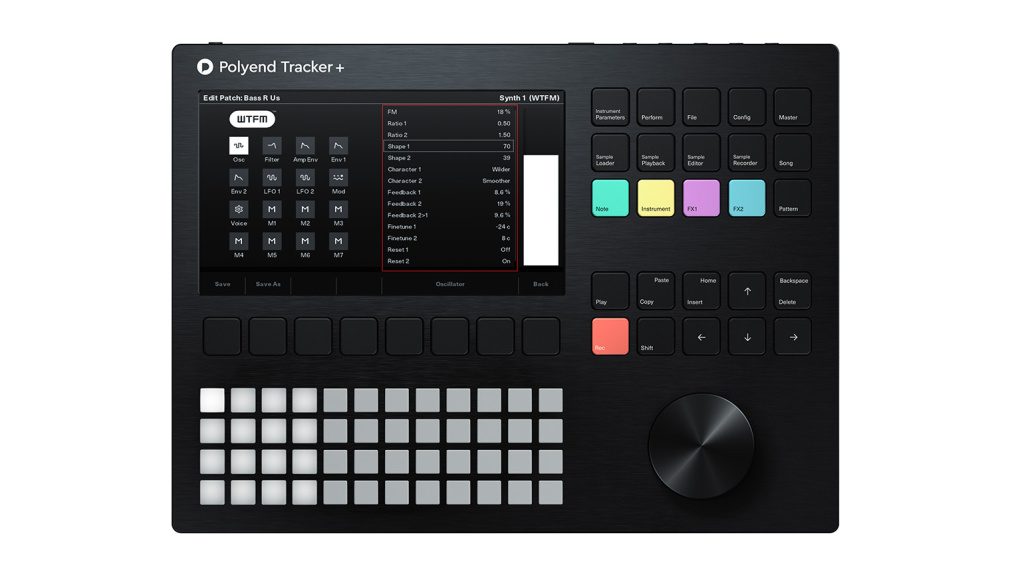
Compared to conventional digital audio workstations (DAWs), trackers rely on a completely different workflow. This is precisely why they are highly valued by many users. For example, Aphex Twin is an avid fan, and a tracker played a pivotal role in creating the album Drukqs. Trackers also played a decisive role in the development of styles such as jungle and, later, drum and bass. “Tracker music” has also had a lasting influence on game soundtracks and the demo scene on computers such as the Amiga and MS-DOS. It’s logical: distinctive chip sounds with fast arpeggios are easy for trackers to produce.
To experience the authentic tracker feeling, check out the latest free software clones of ProTracker 2 and FastTracker II on this website. The most modern software tracker is currently Renoise, but we would like to introduce you to the Polyend Tracker+, a standalone hardware tracker.
The Tracker+ is the perfect complement to the MEGAfm synthesiser and the Blast Beats groovebox. While it can be considered a groovebox, the focus is on samples, which is typical for a tracker. However, compared to classic trackers, there are also five additional synthesiser engines (which are also suitable for chip sounds), and MIDI is supported too. This allows you to easily integrate external equipment.
One possible setup involving both Twisted Electrons devices could look like this: The Polyend Tracker+ is connected to the Blast Beats via the MIDI input, so don’t forget the cable, and it runs in sync. The MIDI output of the Tracker sends note values to MEGAfm and everything plays together in unison. Therefore, a small mixer or an audio interface with multiple inputs would be a suitable addition. However, you can also use the Polyend Tracker+ as an audio interface via the USB connection to transfer the 16 internal tracks directly to your DAW.
You can also transfer samples via USB. With a good bitcrusher, you can make the sounds sound more lo-fi, like an Amiga 8-bit sample. To find new sounds for samples, you can easily use the internal radio in addition to external sources!
The Polyend Tracker+ brings the workflow, fun and creative possibilities of legendary 1990s music programmes into the present day. The small Tracker Mini even evokes the Game Boy era; this model fits in your backpack and runs on an internal battery. If you prefer something more modern, you could opt for a sample-based groovebox, such as the Elektron Digitakt II. The Polyend Tracker+ and Tracker Mini are available from Thomann*.
Conclusion: This Trio is the Perfect Match for Modern Chip Sound
If you’re looking for an authentic 1990s chip sound that goes far beyond the original, Twisted Electron’s MEGAfm and Blast Beats, combined with the Polyend Tracker+, are three complementary products.
MEGAfm brings the FM sound of the SEGA Mega Drive, and the synthesiser is suitable for a wide variety of sounds and can play polyphonic chords. Blast Beats revives the SoundBlaster era in a modern groovebox, mastering more than just retro sounds. If you’re looking for the tracker sound of the 16-bit Amiga and ATARI ST era in a new guise, the Polyend Tracker+ is the perfect companion for tricky sampling and cool synth engines. A perfect match!
More Information
*Note: This article contains affiliate links that help us finance our site. Don’t worry – the price you pay never changes! If you purchase an item via one of these links, we receive a small commission. Thank you for your support!
2 responses to “The Chip Sound of the 1990s in 2025 – This Gear is a Perfect Match!”

 5,0 / 5,0 |
5,0 / 5,0 | 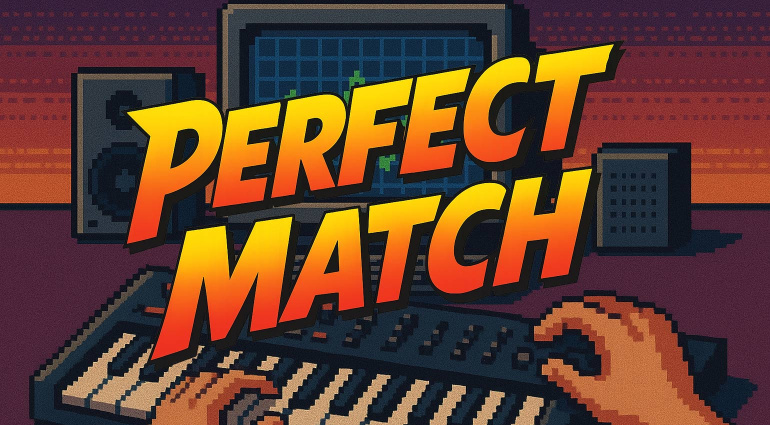

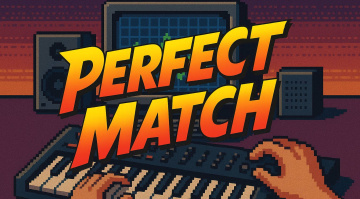

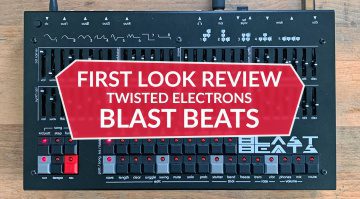
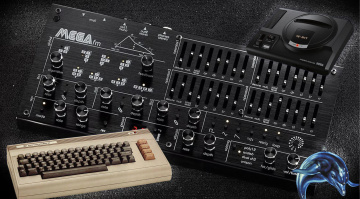
You forgot the Sonicware LIVEN Mega Synthesis with sounds ands tracks from Yuzo Koshiro !!
I started out on Amiga trackers, so I was super excited when hardware trackers started to be a thing. I tried the polyend tracker but it didn’t hit the spot at all. I’m now fully indoctrinated into the Dirtywave M8, it’s an incredible piece of kit. Get yourself a Teensy 4.1, download the headless firmware, try it for a while, and watch out for the release windows on the discord